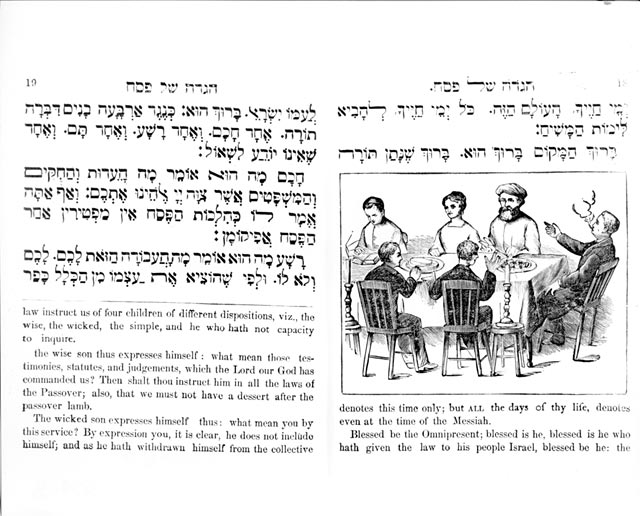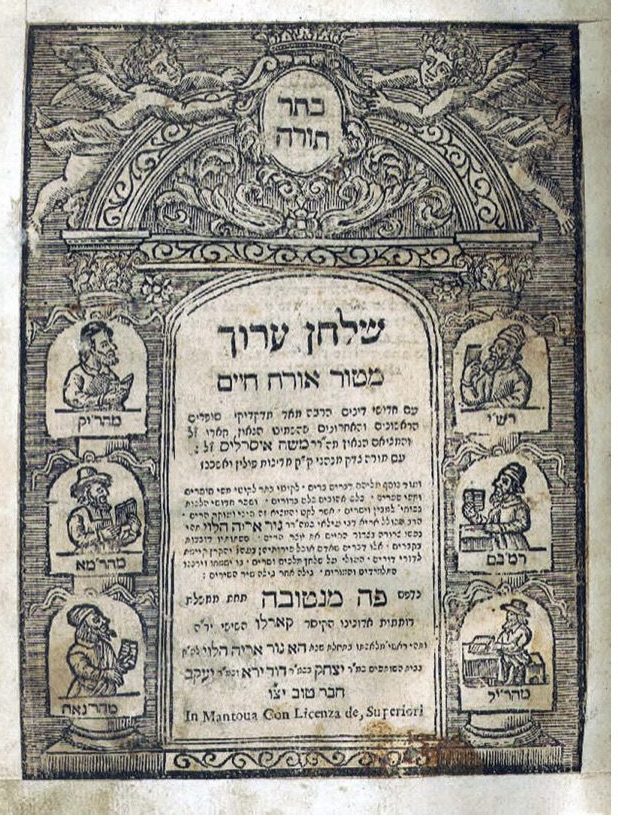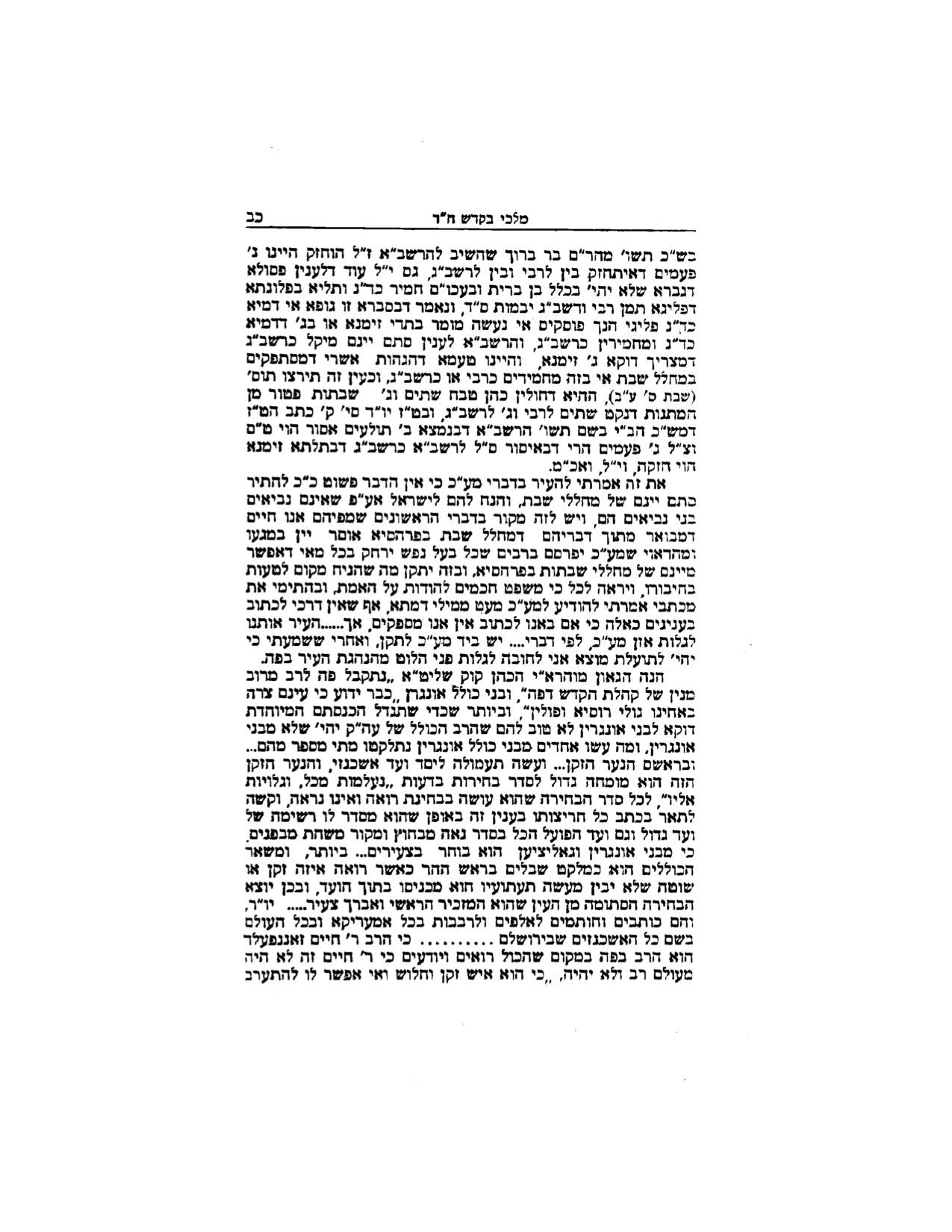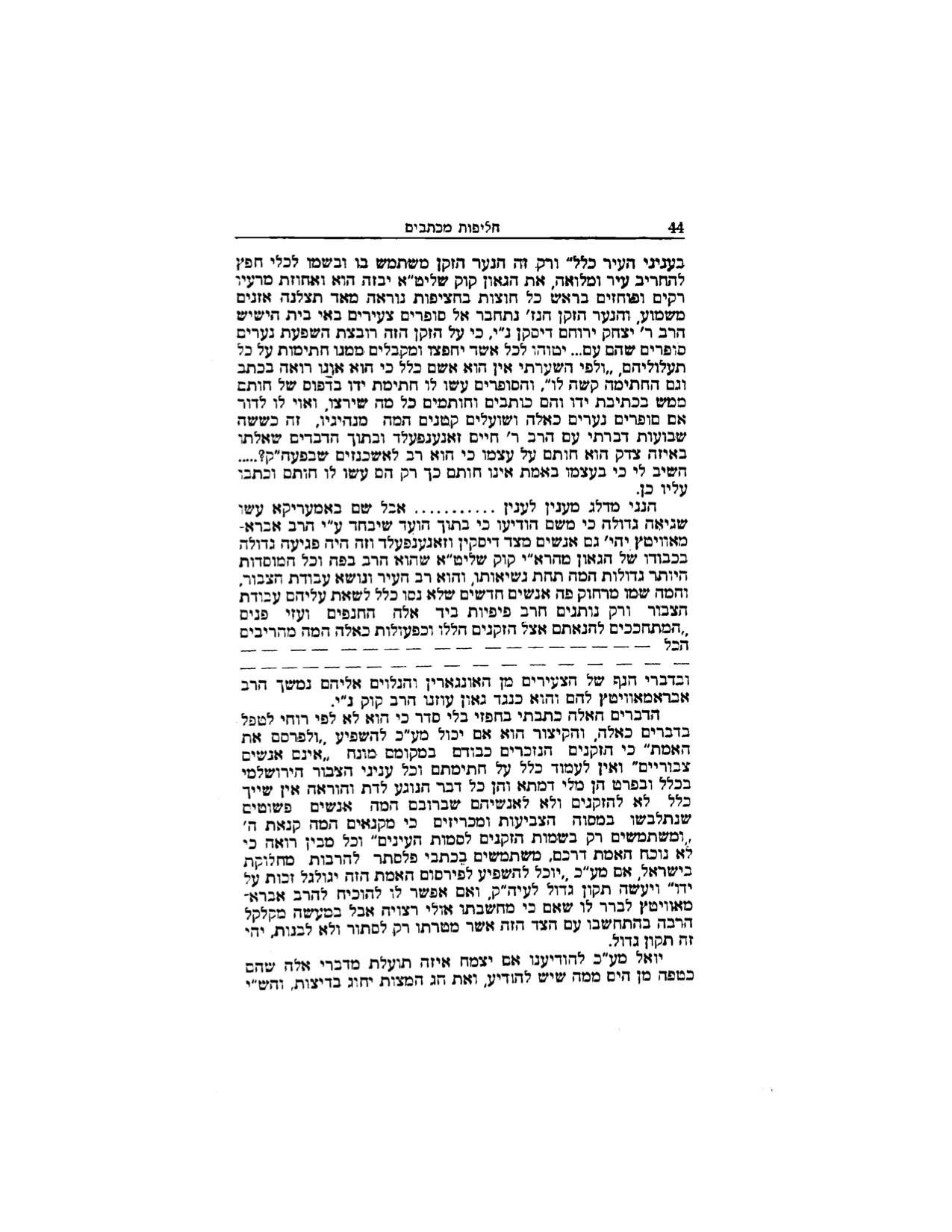To Censor or Not to Censor, that is the Question
To Censor or Not to Censor: Electricity on Yom Tov, Illustrations and Other Items of Interest at Legacy Judaica’s March 2020 Auction
By: Eliezer Brodt & Dan Rabinowitz
Legacy Auction’s latest auction will take place on March 26, 2020. Their catalog provides us the opportunity to discuss a few items of interest to bibliophiles.
There are many examples of the phenomenon of censoring or declaring forgeries of teshuvot and other halakhic rulings especially when those rulings are contrary to contemporary practices. Nonetheless, there is at least one example where the urge to suppress contrary halakhic rulings was rejected.[1]
R. Yehiel Mikhel Halevi Epstein of Novogrudok is most well-known for his pseudo commentary on the Shulkhan Orakh, Orakh ha-Shulhan. [2] In addition to that work, he also wrote teshuvot and other important material, some of which was recently reprinted (see our post here) in Kitvei ha-Orukh ha-Shulkhan. One was controversial responsum regarding turning on and off electric lights on Shabbat.
R. Dov Baer Abramowitz was born in 1860 in Lithuania but left at age 10 for Jerusalem. He received ordination from R. Shmuel Salant and in 1894 emigrated to the United States. He held a handful of rabbinic positions, eventually, in 1906 becoming the chief rabbi of St. Louis. Abramowitz sought to reverse the trend of American Jews abandoning the faith and issued a variety of publications that sought to accomplish the goal of strengthening American Orthodoxy. He was involved in the establishment of REITS, the Agudath Harabbonim, and the first branch of Mizrachi in America. [3] In 1903, Abramowitz, as part of his educational program, began issuing his journal, Bet Vaad le-Hakhamim, “the first rabbinic journal in America, to address the waning of religious observance and the lack of unity among religious authorities in America.” [4]. The annual subscription was $2, a fairly substantial sum when the average weekly wage in 1905 was approximately $11. The journal lasted one year with six issues.
The first issue begins with an important announcement regarding the “new technology in the new land” that is a hot water heater and using it on Shabbat. (Bet Va’ad vol. 1, 4). Many important American (in addition to a few international) rabbis participated in the journal. For example, R. Chaim Ozer Gordzinsky’s older cousin and with whom he studied, Zevi Hirsch the rabbi of Omaha, Nebraska, wrote a lengthy responsa regarding riding a bicycle on Shabbat. He argues that the issue is carrying an object on Shabbat in a public space or even in a karmelit, but he identifies no other prohibition. (Bet Va’ad no. 5, Sivan 5663 [1903], 3-7). Thus, it is unclear whether where there is eruv whether he would have permitted riding a bicycle. The journal also includes a letter detailing the revolutionary production process of Manischewitz machine matzot and the various benefits of that process. (Bet Va’ad, vol. 1 25-27). The letter is from the Chief Rabbi of Cincinnati because Manischewitz was originally founded in Cincinnati and only began production in the New York area in 1932 and shuttered its Cincinnati operations in 1958.[5]
The first issue includes four letters discussing the use of electricity on Yom Tov and whether one can turn on and off electrical switches, R. Epstein’s is the first. (Bet Va’ad, vol. 1, 1). Therein he argues that one can turn on electrical switches on Yom Tov. He identifies the issue of nolad or creating something as potentially prohibiting the action but concludes that one is merely connecting the circuits and nothing new is created. But he caveats his responsum with the disclaimer that electricity is uncommon in Novogrudok and his opinion is based upon his best efforts to understand electricity. Indeed, R. Shlomo Zalman Aurbach refers to R. Epstein’s responsum as containing “devarim tmuhim” and explained that they are a product of a faulty understanding of the technology.(Shlomo Zalman Aurbach, Me’orei Or (Jerusalem, 1980), appendix). Lot 85, includes this volume as well as the second issue.
R. Epstein was not alone in permitting electricity on Yom Tov, indeed, the other three letters in Bet Vaad similarly permit electricity. Other contemporary rabbis also rule in favor of electricity.
Nonetheless, those are minority views and today the common Orthodox practice is to refrain from turning on and off electrical switches. When the publishers of R. Epstein’s writings were deciding what to include in Kol Kitvei, they approached R. Chaim Kanievsky and asked whether they should exclude R. Epstein’s responsum regarding electricity. Presumably, they were concerned that one of the greatest halkhic authorities of the late 19th and early 20th centuries permitted what is “established” law to the contrary (despite the other opinions). But R. Kanievsky rejected that position and held that the responsum should be reprinted.[6]
Another example of Americana and the use of fire on Yom Tov appears in one of the first haggadot printed in the United States. The 1886 illustrated Haggadah contains a depiction of the four sons. Depicting the four sons is very common in the illustrated manuscripts and printed haggadot. In this instance, the wicked son’s disdain for the seder proceedings shows him leaning back on his chair and smoking a cigarette. According to many halakhic authorities, smoking is permitted on Yom Tov, nonetheless, the illustration demonstrates that at least in the late 19th-century smoking was not an acceptable practice in formal settings. (For a discussion of smoking on Yom Tov, see R. Shlomo Yosef Zevin, Mo’adim be-Halakha (Jerusalem: Mechon Talmud Hayisraeli, 1983), 7-8).

One of the other lots that also implicates illustration is lot 94, Shulhan Orakh im Pirush Gur Areyeh, Mantua, 1722, that contains the commentary of R. Yosef ben Ephraim Gur Areyeh Halevi. As we have previously discussed at the end of this post, the Gur Areyeh’s title page to the first volume depicts six relevant personalities, Rashi, Rambam, MahaRIL, R Yosef Karo, R. Moshe Isserles, and R. Gur Areyeh. According to some accounts, this illustration roused the ire of some rabbis because they felt the depictions were crude, and in some instances seem to show at least one rabbi in violation of Jewish law. Allegedly, they claim that the Rambam is shown with insufficient peyot (sidelocks) in addition to long hair (as do others). Thus in the remaining volumes of this edition, the illustrations were removed and they no longer appear (although at least in one preserved copy the illustration is repeated in the Yoreh De’ah volume).

One lot, # 161, is an incredible discovery: R. Yosef Dov Halevi Soloveitchik’s (Bet Halevi) copy of the Halakhot Gedolot (BeHaG). This copy contains hundreds of unpublished glosses, citations, and cross-references. This copy establishes that the Netziv was not the only Rosh Yeshivah of Volozhin who was involved in the works of the Geonim. One only can hope that whoever purchases this copy will publish the notes.
Another such item is # 87 is a presentation copy of Derishat Tzion that contains the commentary of R’ Tzvi Pesach Frank. Although not noted in the description R. Frank presented this copy to R’ Chaim Hirschenson. In his Shut Malkei Bakodesh,(4:10) R’ Hirschsenson prints a very interesting letter from R Frank after he received a copy of one of R. Hirschenshon’s book. R Frank took issue with some of R. Hirschenshon’s conclusions and to his credit, he prints it without censoring it. The book being auctioned might have been a gift from R Frank in return for the gift he received. R. Frank’s letter is full of fascinating contemporary descriptions of Jerusalem.

 Finally, for a discussion regarding lot 93, Menukha ve-Kedusha and censorship see our post here.
Finally, for a discussion regarding lot 93, Menukha ve-Kedusha and censorship see our post here.
[1] See, for example, Yakkov Shmuel Speigel, Amudim be-Tolodot Sefer ha-Ivri: Ketivah veha-Atakah (Ramat Gan: Bar Ilan University Press, 2005), 241-97; Marc Shapiro, Changing the Immutable: How Orthodox Judaism Rewrites History (Oxford: Littman Library of Jewish Civilization, 2015), 81-118.
[2] For a biography see R. Eitam Henkin, Tarokh le-fani Shulkhan (Jerusalem: Maggid, 2019). Regarding this book see our discussion here.
[3] Yosef Goldman, Hebrew Printing in America 1735-1926: A History and Annotated Bibliography (Brooklyn: [YG Books], 2006), vol. 1, no. 584, 514. See our reviews of Goldman’s bibliography here and here.
[4] Goldman, Hebrew Printing, no. 591, vol. 1, 521.
[5] See generally, Yossi Goldman, vol. 1, no. 591, 520-21. Bet Vaad contains materials beyond responsa and halakhic discussions, including poetry, discussions regarding Jewish life in America such as yeshivot, restaurants, and a fable written in verse.
For a discussion of Manischewitz, see Jonathan D. Sarna, “How Matzah Became Square: Manischewitz and the Development of Machine-Made Matzah in the United States,” in Rebecca Kobrin, ed., Chosen Capital: The Jewish Encounter with American Capitalism (New Brunswick: Rutgers University Press, 2012), 272-288; Jonathan D. Sarna, How Matzah Became Square: Manischewitz and the Development of Machine-Made Matzah in the United States (New York: Touro College, 2005).
[6] Regarding the position that seeks to portray Orthodox Judaism a monolithic halakhic process and view as legitimate only certain opinions see Adiel Schremer, Ma’ase Rav: Shekul ha-Da’at ha-Halakhati ve-Eytsuv ha-Zehut ha-Yahadut (Ramat Gan: Bar Ilan University Press, 2019), 191-97.



23 thoughts on “To Censor or Not to Censor, that is the Question”
Thank you, interesting post.
One note though – Rav Zvi Hirsch Grodzenski was not Rav Chaim Ozer’s son, he was a cousin.
re: “R. Chaim Ozer Gordzinsky’s son, Zevi Hirsch the rabbi of Omaha, Nebraska”
Sass is correct – a second cousin of R. Chaim Ozer. R. Zvi Hirsh (ben R. Meir) Grodzinsky of Omaha, NE is mentioned on p.293 of ספר אהלי שם and you can see the father’s name on his kever here: https://www.orthodoxomaha.org/rabbi-grodzinsky1.html
RE Moshe & Sass
Slow down its a post in middle of being edited.
See the link in the post
https://seforimblog.com/2012/01/review-of-recent-work-of-rav-zvi-hirsc/
He was an older cousin of the famous Gadol Hador, Rabbi Chaim Ozer, and he learned by R. Chaim Ozer’s father for a few years.
“…a post in middle of being edited” after t’was already published on the site? A bit backwards don’t you think?
(Since it’s “being edited” I’d add a couple of needed corrections:
Generally: responsum = singular; responsa = plural
Re. #94: “…this illustrates roused…”
Re. #87: “The book being auctioned is might…”)
Oh ok
I didn’t realize the post is not fully edited.
Yes, I saw that earlier post too – which made today’s all the more surprising 🙂
a length responsa?
a long response?
a lengthy response?
“Caveat” can be used as a verb?
“This copy establishes that the Netziv was not the only Rosh Yeshivah of Volozhin who was involved in the works of the Geonim.”
Not to be pedantic but studying [secrions of] the BHG does not exactly constitute “involved in the works of the Geonim” to the same extent as the Netziv who reworked and commented on entire works. BHG, on the other hand, is a classic source for any Rosh Yeshiva, even one who doesn’t “dabble” in Geonim/Geonica. Furthermore, upon inspection of the images offered by the auction house I see notes/references only on the classic pieces of BHG (dealt with by many Rishonim and Tosafists on the respective topics; e.g. kiddushe na’arah, sefirat ha’omer – and the intro., because, well, it’s the introduction after all).
The learning methodologies of the two aforementioned greats were greatly different too, a factor -posssibly the main one- which divided the two over Volozhin’s leadership, a topic already sufficiently analyzed and way beyond the scope of this comment. Therefore, one should be hesitant to draw conclusions -based on some notes to BHG- that the BH was involved in the Geonim, essentially a presumption which is inconsistent to his overt “mehalech ha’limud”.
“upon inspection of the images offered by the auction house I see notes/references only on the classic pieces of BHG ”
Just because they uploaded these pages doesn’t mean that’s all that’s there.
a. “devarim temuim”
Is that דברים תמוהים?
Then devarim tmuhim
b. as for the smoking son, may I suggest that there are recorded instances of Bundists especially, as well as other reclacitrants, who would smoke on Shabbatot and became a symbol of extreme anti-Orthodoxy, even if smoking is permitted on Yom Tov. Thus that image was one which would resonant.
Dear Ovadya
I am sorry but I must disagree with you. I did not claim that these notes on the Behag show the Beis Halevi notes to be same as the Netziv classic work on Geonim or demonstrate that he was equally involved with Geonim as the Netziv (far from it).
The Behag was printed once in 1548 it was not printed again until 1810. There was almost no usage of this work by anyone for those few hundred years. Almost anyone who used it was via secondary sources. When exactly did any works of the Geonim start to be used via the actual texts is part of an article I am in the process of completing where I attempt to document this story.
Assuming that the auctions description is correct (which I have no reason to assume its not) I have no idea how you can say anything based on seeing two partial pages of a few notes of what the style of the comments of the work is. To use your own words one should be hesitant to draw conclusions -based on some notes to BHG”. All I can see from the pages is that he read the work carefully and compared it to the Gemorah. That alone is unique that the BH read the work and wrote hundreds of glosses. Thus he was not the only RY of Volozhin even reading such a work and one of the few at that time actually reading not via second hand sources.
I honestly have no idea what in the world you are referring to when you say “its a classic source for any Rosh Yeshiva, even one who doesn’t “dabble” in Geonim/Geonica”.
Which regular Rosh Yeshivah even today spends any time with such a source? I would claim until today (and it being easily available for purchase) that most never cracked open the sefer nor know its significance and the same for most people in learning its simply not on their “radar”.
BH
I hope that one day someone will reprint the notes of the Netziv.
*sorry the Beis Halevi.
Like!! I blog quite often and I genuinely thank you for your information. The article has truly peaked my interest.
Very good article! We are linking to this particularly great content on our site. Keep up the great writing.
Very good article! We are linking to this particularly great content on our site. Keep up the great writing.
Win a lamborghini huracan!!! register you !!
win money dream
win money online now
win money
what was the price of btc in 2013
win money by losing weight